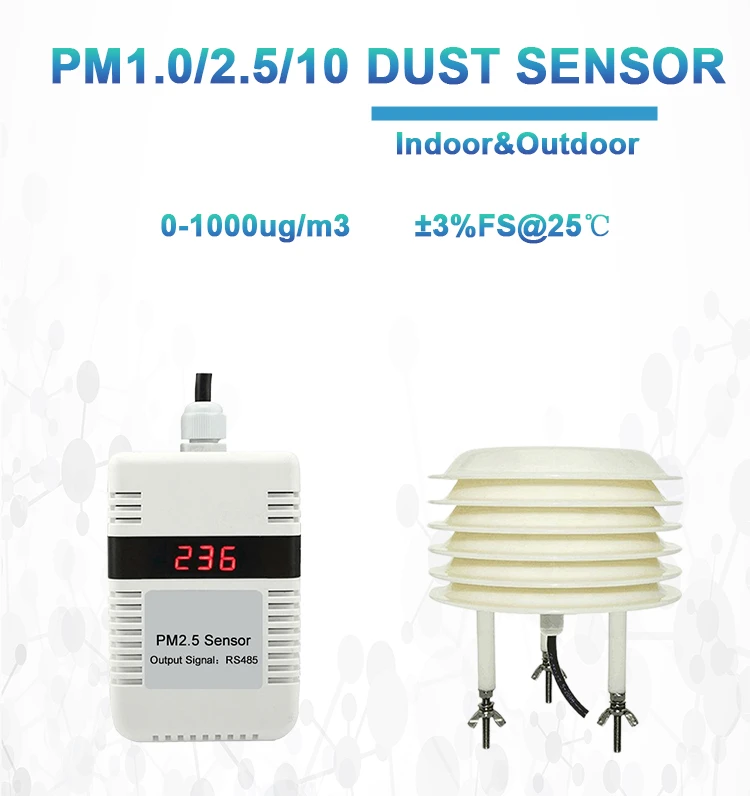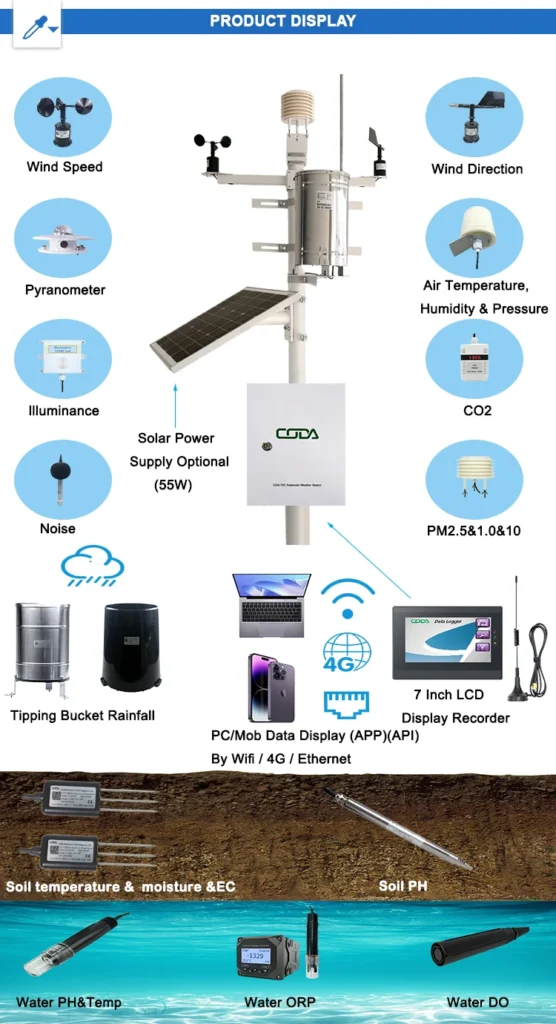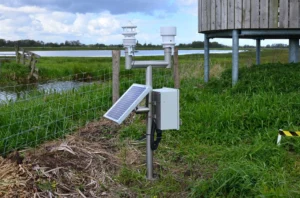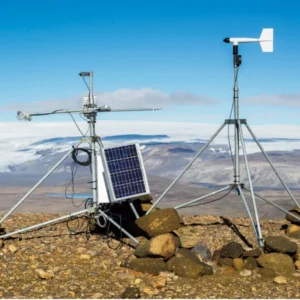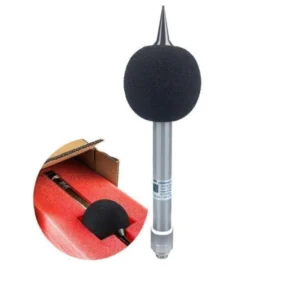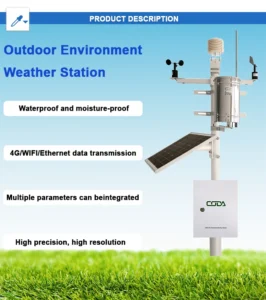What does an air quality sensor measure or detect?
Air quality is crucial, but we often ignore it. We only notice it when it affects our health. As worries about the environment grow, air quality sensors are becoming more important.
These new devices help find and measure various pollutants in the air we breathe. They are helpful for health-conscious people and planners who want to make healthier places.
In this section, we will see what air quality sensors can find. We will also explain how they work. Finally, we will talk about how they affect public health and environmental plans.
Understanding Air Quality Sensors
Air quality sensors are special tools that detect pollutants in the air. They have advanced technology that allows them to track many air pollutants. This includes both tiny particles and volatile organic compounds (VOCs).
These devices are often classified into two main categories: active and passive sensors. Active sensors need an outside power source to work. They often use complex systems to analyze air samples. On the other hand, passive sensors rely on natural air diffusion to gather data without active sampling.
A big benefit of air quality sensors is that they give real-time data on pollution levels. Many modern sensors have features like wireless networking and smartphone integration.
This gives users quick access to air quality readings. This feature is helpful for people deciding when to go outside. It is also helpful for researchers and city planners to track pollution trends in different areas.
Air quality sensors have different features. Their abilities depend on how they are designed and how sensitive they are. Industrial sensors can often find harmful gases. These gases include carbon monoxide and sulfur dioxide.
In contrast, residential or commercial models usually focus on measuring particulate matter or ozone levels. This type lets us check air quality in many places, like cities and factories. It makes sure the right tools are ready for different needs.
These sensors help check pollution and make sure rules are followed. Government agencies set air quality standards to protect people’s health.
Sensors help check if these rules are being followed. By gathering long-term data, they help research how pollution affects us over time. This helps communities make the air cleaner.
Pollutants Detected by Air Quality Sensors
Air quality sensors can detect many pollutants that can harm human health and the environment. Common pollutants are:
– Particulate matter (PM)
– Carbon monoxide (CO)
– Ozone (O₃)
– Nitrogen dioxide (NO₂)
– Sulfur dioxide (SO₂)
Volatile organic compounds, or VOCs, come from many places. They can impact health in various ways. This is why accurate detection is important.
Particulate matter
Particulate matter is tiny particles in the air. They come from sources such as car emissions, construction work, and natural events like wildfires.
Researchers categorize particles into two groups. The first group is PM10, which includes particles that are 10 micrometers or smaller. The second group is PM2.5. This group includes particles that are 2.5 micrometers or smaller.
Smaller particles are very dangerous. They can go deep into the lungs and enter the bloodstream. This can lead to serious breathing and heart problems.
Carbon monoxide
Carbon monoxide is a common pollutant. Air quality sensors often check for it. This gas is colorless and odorless. It comes from burning fossil fuels. You can find it in car exhaust and factory emissions.
High levels of carbon monoxide can stop the blood from carrying oxygen. This can cause symptoms like fatigue and dizziness. In severe cases, it can lead to serious problems like organ failure.
Air quality sensors find pollutants. They are important tools for lowering risks and keeping public health safe. They help people make informed choices.
And they also give governments and organizations the data they need for planning. This data supports effective strategies for intervention. Air quality sensors lead to cleaner air and healthier communities.
Ozone
Ozone is important in the upper atmosphere because it absorbs harmful UV radiation. However, it becomes a harmful pollutant when it is at ground level. Ground-level ozone forms when sunlight hits pollutants. These pollutants include VOCs, which are volatile organic compounds, and nitrogen oxides.
These are often released from vehicle emissions. Breathing in this type of ozone can be very harmful. This is especially true for people with asthma or other breathing problems.
It also harms the environment. This leads to crop damage and lower agricultural productivity.
Nitrogen dioxide
Nitrogen dioxide (NO₂) and sulfur dioxide (SO₂) are also significant air pollutants tracked by air quality monitoring systems. Both gases mainly come from burning fuel in cars and power plants. Nitrogen dioxide can make breathing problems worse.
Sulfur dioxide
Sulfur dioxide causes acid rain. This rain can hurt ecosystems. It is important to watch these pollutants.
This helps enforce air quality standards. It also protects public health and the environment.
Volatile organic compounds come from common household products like paints, cleaning agents, and pesticides. They make air quality worse. VOCs help create ground-level ozone.
Health issues, like breathing problems and long-term risks such as cancer, link to them. High-accuracy air quality sensors can find VOCs. They are especially important in homes and factories.
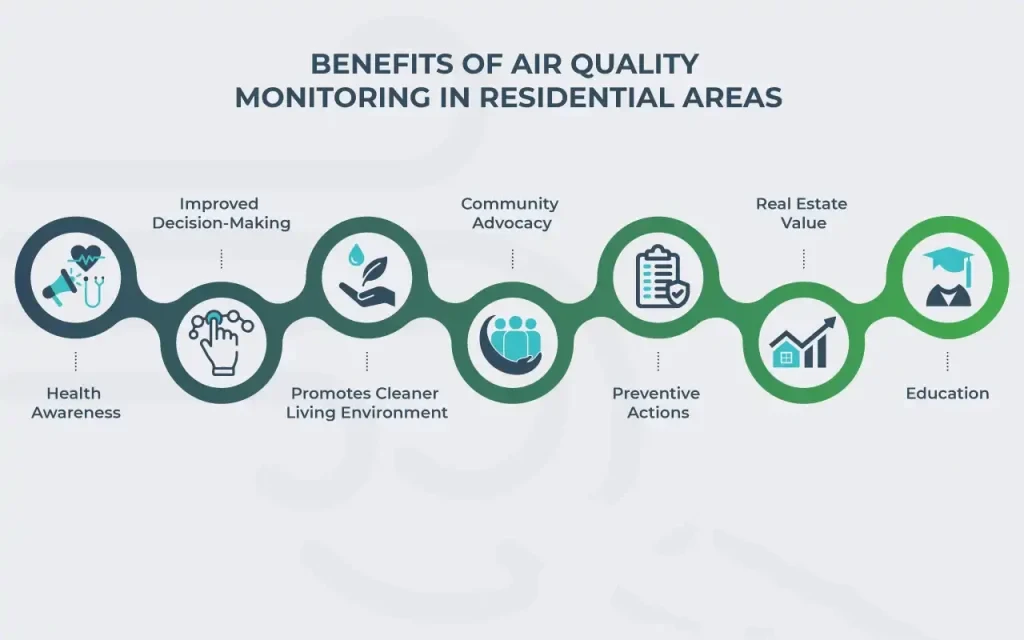
The Role of Air Quality Sensors in Public Health
Air quality sensors do more than just find pollutants. They are important tools for keeping people healthy. These devices give accurate, real-time information about pollution levels.
This helps people and communities make good choices. They can reduce their exposure to harmful substances.
For example, when pollution levels are high, this data helps people take action. They can stay indoors or use air purifiers.
Public health agencies use air quality sensors to find pollution hotspots. They also study long-term trends in air quality. Such information is essential for assessing the health effects of prolonged exposure to polluted air.
Researchers have found that long-term poor air quality can cause many health issues. These include breathing problems, heart and blood vessel diseases, and even brain disorders. Understanding these connections enables researchers and public officials to address pressing health challenges more effectively.
Moreover, air quality detect sensors play a disruptive role in shaping public health policies. With good data, policy planners can create focused strategies and use resources more effectively.
For example, places with high pollution levels can benefit from better traffic rules. They can also put money into cleaner public transportation. This will help reduce emissions.
The recent COVID-19 pandemic has shown how important air quality is for public health. Research shows that bad air quality can make breathing infections worse, including COVID-19. The need for accurate pollution data has increased a lot. This has led city planners and healthcare workers to include air quality in their decisions.
More affordable air quality sensors are now available. This allows people to monitor their environments on their own. These tools help raise awareness about local air pollution. They are valuable for education.
They promote community involvement in air quality issues. And they also support efforts to create cleaner and healthier air.
Technological Advances in Air Quality Monitoring
As we learn more about air quality, air quality sensor technology is improving quickly. New sensor designs, better materials, and improved data analysis are making devices more efficient. They are also becoming more accurate and easier to use.
Modern sensors use different technologies. These include electrochemical cells, photometry, and laser scattering. These methods help improve detection abilities.
Researchers often use electrochemical sensors to check gases like carbon monoxide, nitrogen dioxide, and ozone. These sensors change certain gases into electrical signals.
These signals show how much of the gas is in the air. Their low cost and small size make them great for many uses. They can be used for personal tracking or for big city systems.
Photo-based sensing technologies are now more common for tracking tiny particles in the air. Methods like laser scattering help measure data on particle size and concentration in real time.
This provides useful insights into both short-term and long-term air quality. These advancements make data more reliable. They also help with the ongoing monitoring of air pollutants.
A big improvement in air quality monitoring comes from using Artificial Intelligence (AI) and machine learning. These tools can look at large data sets. They can find patterns and trends that we might miss.
AI can also predict air quality levels. These predictions help communities prepare for pollution peaks. This way, they can reduce potential impacts.
The growth of the Internet of Things (IoT) is changing how we monitor air quality. By linking sensors to the internet, we can share real-time data easily.
This allows for full monitoring of the city. This connected system encourages teamwork among all involved. This includes local residents and government agencies. Together, they can improve air quality management.
However, progress brings challenges. More sensors are now available, but the market is full of devices with different quality. It is important for users to find reliable sensors that give accurate readings.
It is also important to standardize how we calibrate sensors and report data. This will help build trust in the information from these devices.
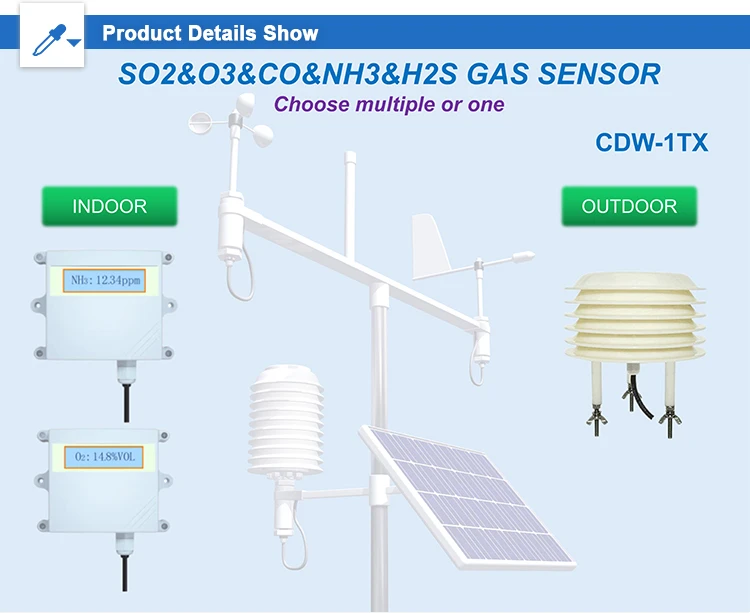
The Future of Air Quality Monitoring
The future of air quality detect monitoring looks bright. Ongoing research and new ideas aim to improve our understanding of pollution. This includes its effects on health and the environment.
A main goal in this field is to create smarter sensors. These sensors will find pollutants and look at where they come from. This will help us evaluate air quality better.
Future innovations may include new features like mobile apps. These apps can help users see air quality data clearly. Location tracking can give personalized updates based on where a user is.
This links personal actions to their impact on air quality. This software helps people understand and encourages better behavior for pollution control.
With cities growing quickly around the world, the need for good monitoring systems is increasing. Smart cities that use air quality data in their plans can build stronger and more sustainable communities. Setting up air quality monitoring networks is important. These networks help make rules that reduce emissions and boost health.
Collaboration between private companies, governments, and research institutions is key to improving these systems. By sharing resources and knowledge, we can create new solutions that are better than what one person can do. Active community involvement is also very important. Informed citizens can lead discussions about air quality and push for cleaner environments.
In summary, air quality sensors are essential tools for healthier communities and better environmental conditions. They give important information about pollutant levels. They help public health plans and improve our understanding of air pollution’s effects.
As technology improves, we can better fight pollution and improve air quality. By working together and cooperating, we can make cleaner air a reality.
